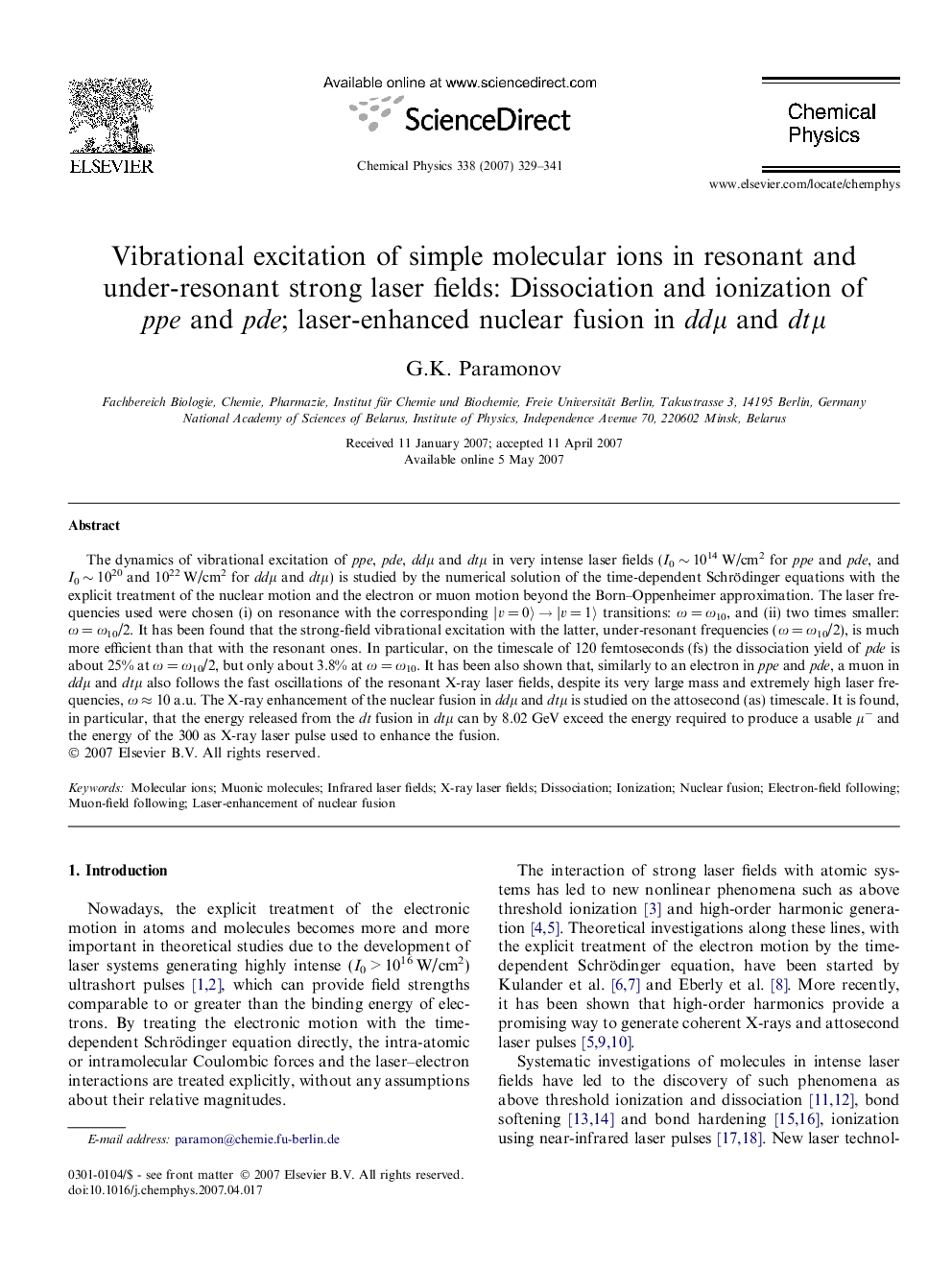| Article ID | Journal | Published Year | Pages | File Type |
|---|---|---|---|---|
| 5376647 | Chemical Physics | 2007 | 13 Pages |
Abstract
The dynamics of vibrational excitation of ppe, pde, ddμ and dtμ in very intense laser fields (I0 â¼Â 1014 W/cm2 for ppe and pde, and I0 â¼Â 1020 and 1022 W/cm2 for ddμ and dtμ) is studied by the numerical solution of the time-dependent Schrödinger equations with the explicit treatment of the nuclear motion and the electron or muon motion beyond the Born-Oppenheimer approximation. The laser frequencies used were chosen (i) on resonance with the corresponding â£v = 0ã â â£v = 1ã transitions: Ï = Ï10, and (ii) two times smaller: Ï = Ï10/2. It has been found that the strong-field vibrational excitation with the latter, under-resonant frequencies (Ï = Ï10/2), is much more efficient than that with the resonant ones. In particular, on the timescale of 120 femtoseconds (fs) the dissociation yield of pde is about 25% at Ï = Ï10/2, but only about 3.8% at Ï = Ï10. It has been also shown that, similarly to an electron in ppe and pde, a muon in ddμ and dtμ also follows the fast oscillations of the resonant X-ray laser fields, despite its very large mass and extremely high laser frequencies, Ï â 10 a.u. The X-ray enhancement of the nuclear fusion in ddμ and dtμ is studied on the attosecond (as) timescale. It is found, in particular, that the energy released from the dt fusion in dtμ can by 8.02 GeV exceed the energy required to produce a usable μâ and the energy of the 300 as X-ray laser pulse used to enhance the fusion.
Related Topics
Physical Sciences and Engineering
Chemistry
Physical and Theoretical Chemistry
Authors
G.K. Paramonov,
